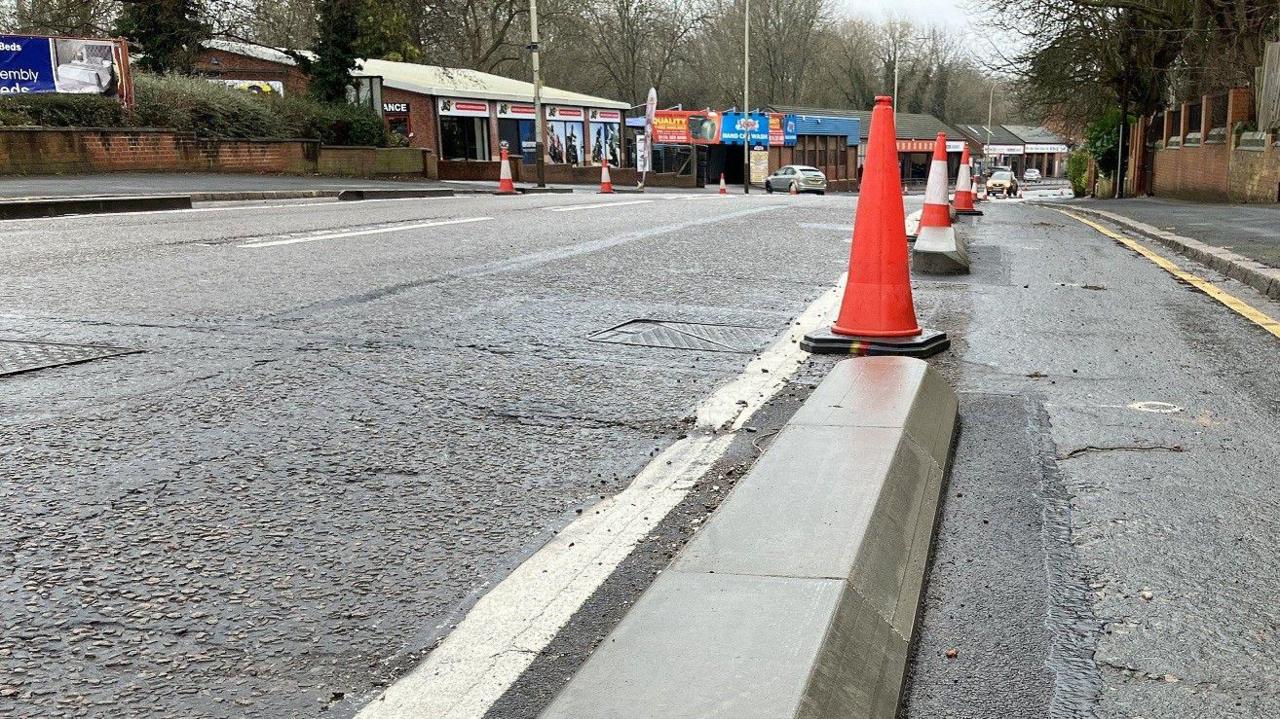Concern over 'invisible' concrete cycle lane blocks

Grey kerbing separates cars from cycles on Aylestone Road
- Published
New concrete blocks segregating cycle lanes on one of Leicester's busiest roads are a hazard for motorists and pedestrians, residents have said.
Pop-up cycle lanes appeared in Aylestone Road during the Covid pandemic to encourage sustainable travel.
Concrete segregators have now been installed to make the lanes permanent, but some residents said they were unsafe.
Leicester City Council said similar blocks had been successfully used elsewhere in the city to protect cyclists.

Councillor Nigel Porter said the blocks were dangerous
The permanent features were installed by the city council before Christmas.
Nigel Porter, city councillor for Aylestone, said that of about 100 people who came to a ward meeting on the issue two weeks ago, only three people thought the cycle lanes were a good idea.
Mr Porter said residents wanted to see cyclists protected, but not at the expense of other road users and that they had not been consulted properly about the scheme.
Pedestrians had fallen over the blocks and a motorist - who struck one of the kerbs - caused £350 in damage to their car, he said.
He added: "They are a danger, not just to pedestrians, but to motorists and all road users."

Assistant shop manager Sam Bradshaw said he was "not a massive fan" of the cycle lanes
Sam Bradshaw, assistant manager at J&S Accessories in Aylestone Road, said he often saw traffic struggling to get out of the way of emergency vehicles because of the blocks.
He has known drivers to damage their vehicles as they pull out from local businesses on to the road and hit the kerbs.
"Because they're not marked with white or yellow paint, in poor weather conditions they're essentially invisible," he said.
Mr Bradshaw said he cycled himself and liked the idea of dedicated lanes, but said: "90% of the people we speak to are not a fan of these cycle lanes."
Work to continue
A council spokesman said: "The design uses the kind of concrete segregators which have been in use successfully in London Road since 2020 to replace the temporary wand markers, and has no impact on the number of traffic lanes.
"By creating a protected cycleway, we are reducing both the likelihood of drivers colliding with cyclists and illegal footway cycling, which improves safety for people using the pavements."
He said further work was due in coming months to complete the scheme, including replacing temporary traffic cones with vertical wands near some junctions.
New pedestrian crossings will also be added with red surfacing applied to make the cycle tracks more visible and distinct.
Follow BBC East Midlands on Facebook, external, on X, external, or on Instagram, external. Send your story ideas to eastmidsnews@bbc.co.uk, external